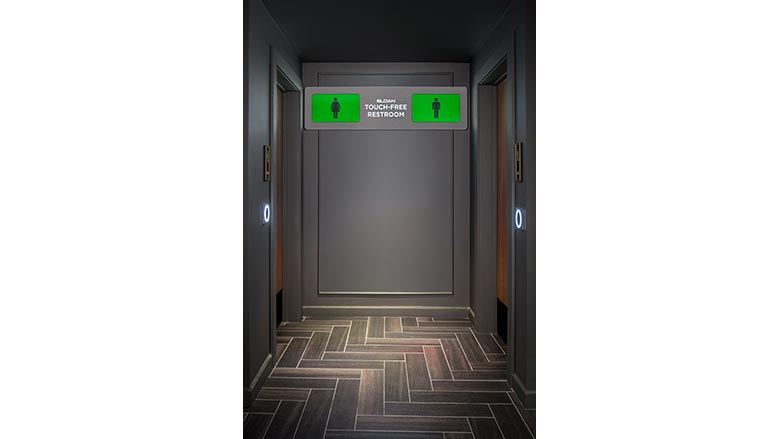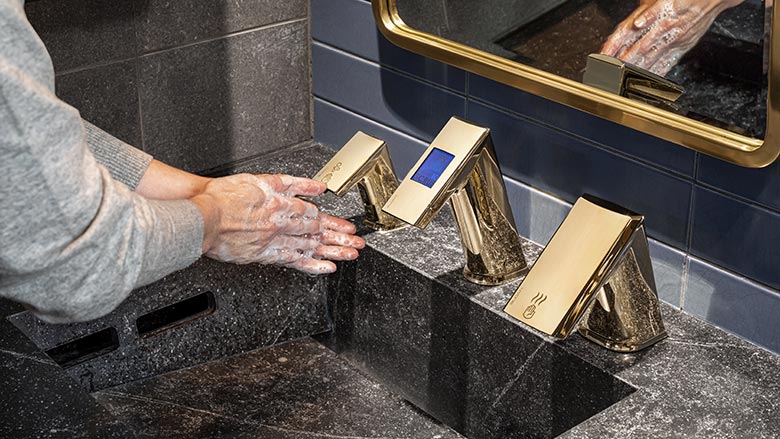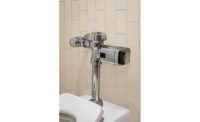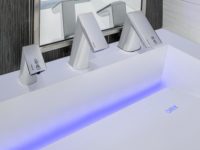The initial COVID-19 outbreak fast-tracked the specification of touch-free restroom products in commercial facilities. The typical manual faucet and toilet handles harbor anywhere between 107 to 17,976 germs per 10 square centimeters. With the restroom full of these “high-touch” surfaces that can be a breeding ground for viruses and bacteria, going touch-free quickly became a pivotal element for the safety of building occupants.
But more than two years have passed since then. Touch-free technology was once an added benefit in commercial restroom specification, but it has now become a pre-requisite for many commercial buildings.

And it’s not a trend that is changing anytime soon with the public awareness of hand hygiene now greater than ever. In fact, according to a survey by Zogby International, 93% of Americans try to avoid coming into contact with germs by employing evasive measures and 65% use a paper towel when touching surfaces like faucets and flushometers.
If it’s already being adopted by facilities across the country, where does touch-free restroom technology go from here? The answer: There’s still plenty of room left for touch-free innovation which can provide benefits for building occupants, plumbers and contractors.
IoT insights
When people consider touch-free restroom products, their first thought can often be the hygienic benefits that those products deliver, which is certainly true. But it’s also the technology inside these sensor-operated fixtures that is making them an attractive specification.
This is due in large part to the Internet of Things (IoT) and the Bluetooth-enabled technology embedded within products such as sensor-operated faucets and flushometers. Connected products afford maintenance teams and plumbing contractors the opportunity to quickly adjust settings, monitor usage and diagnose wirelessly right from their fingertips. These solutions help shorten repair time and proactively troubleshoot issues while increasing water efficiency thanks to adjusted sensor range and customized timeouts.

Is the smartphone app showing that a product hasn’t used any water in the last several hours? If so, it’s likely out of order, and a checkup may be required. Want to troubleshoot issues before they become bigger problems? A diagnostics program is designed to quickly identify solutions.
Commercial facilities of all types are beginning to put this technology into practice. Empower Field at Mile High Stadium — home of the NFL’s Denver Broncos — specified Bluetooth flushometers throughout the stadium, allowing the facility’s maintenance staff to wirelessly monitor restroom fixtures through their smartphones. In essence, these nuances now effectively take the guesswork out of the repair process.
Similarly, Vanderbilt University Medical Center installed sensor faucets with connected technology that now enables its maintenance team to conduct weekly check-ins on specific faucets throughout the facility, while the data they gather allows the team to measure and report water usage as needed. In health care settings where proper hand hygiene is paramount, IoT technology can store information inside sensor-based faucets to track not only how many people wash their hands, but also for how long. It has become especially important for medical facilities to monitor whether health care professionals and patients are practicing proper handwashing.
Plumbing contractors will need to become familiar with this sensor-based technology, as it will only continue to increase in popularity. According to a recent report, sensor faucets are expected to grow by 31% by 2026, making it more important than ever for plumbers and contractors to better understand touch-free faucets.

The Restroom of the future
Hands-free faucets and hand dryers are the predominant touch-free innovations of the present, but a glimpse into the restroom of the future shows an entirely touch-free restroom experience.
And the future is now at Gainbridge Fieldhouse in Indianapolis, a renowned entertainment venue and home to the NBA’s Indiana Pacers and the WNBA’s Indiana Fever. The arena’s Caresource Courtside Club is now offering visitors a hands-free experience from the time they walk through the restroom door.
Sensor-activated entry doors, as well as touch-free sensor faucets, provide a hygienic experience, as self-guided handwashing faucets utilize an LED screen to provide guests with a 20-second countdown to ensure a complete handwashing cycle. Additional innovations include digital signage outside to indicate restroom capacity, flood detection sensors and more.
Ever since Sloan debuted the first hands-free sensor faucet in 1974, the company has been an innovator in touch-free products. The Sloan AER-DEC Integrated Sink System combines touch-free faucets, soap dispensers, and hand dryers into one highly efficient system where guests can wash their hands while touching nothing but soap and water. Sloan faucets and flushometers also now utilize Bluetooth connectivity and advanced technology to make managing usage and tracking easy.



